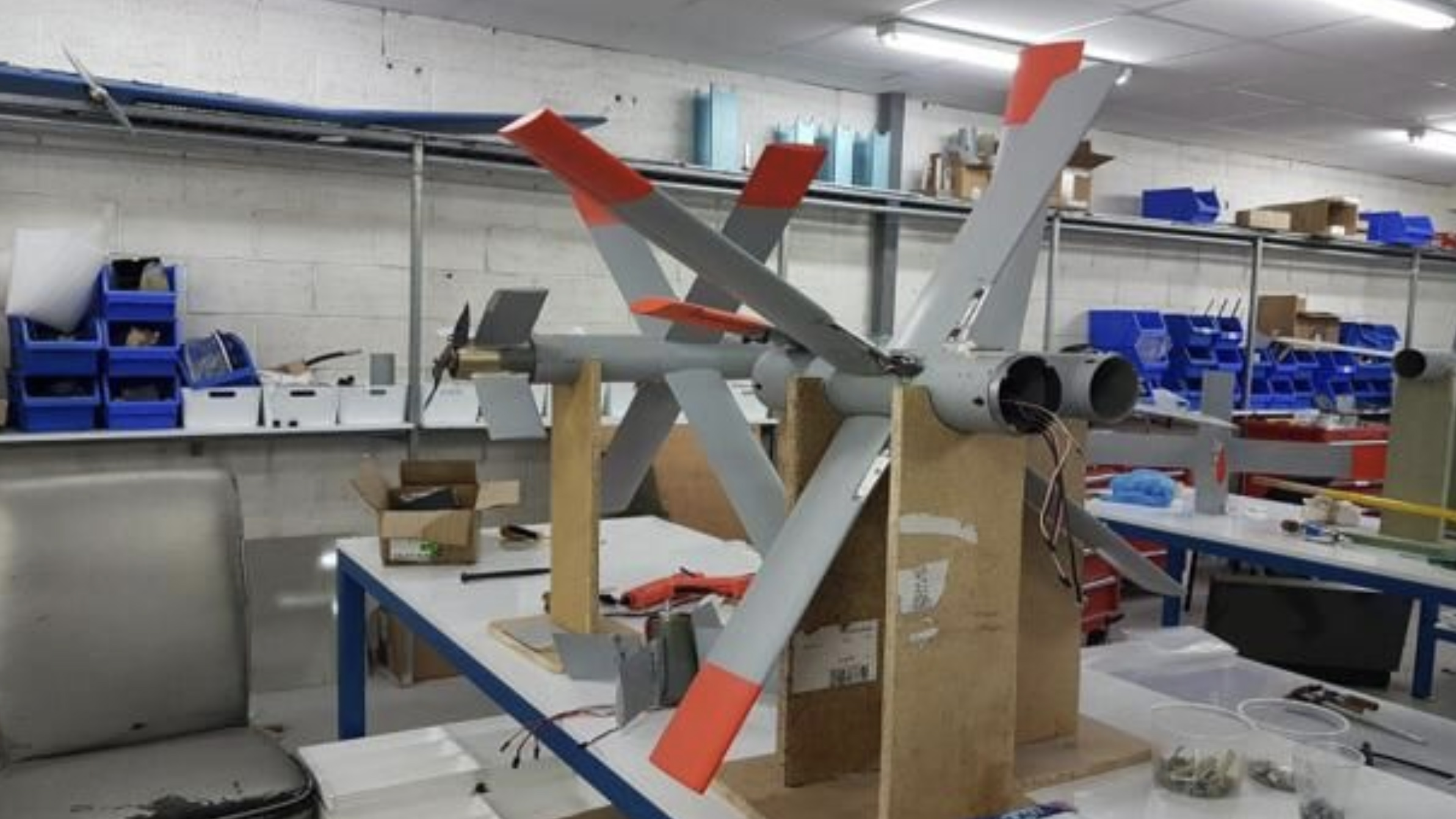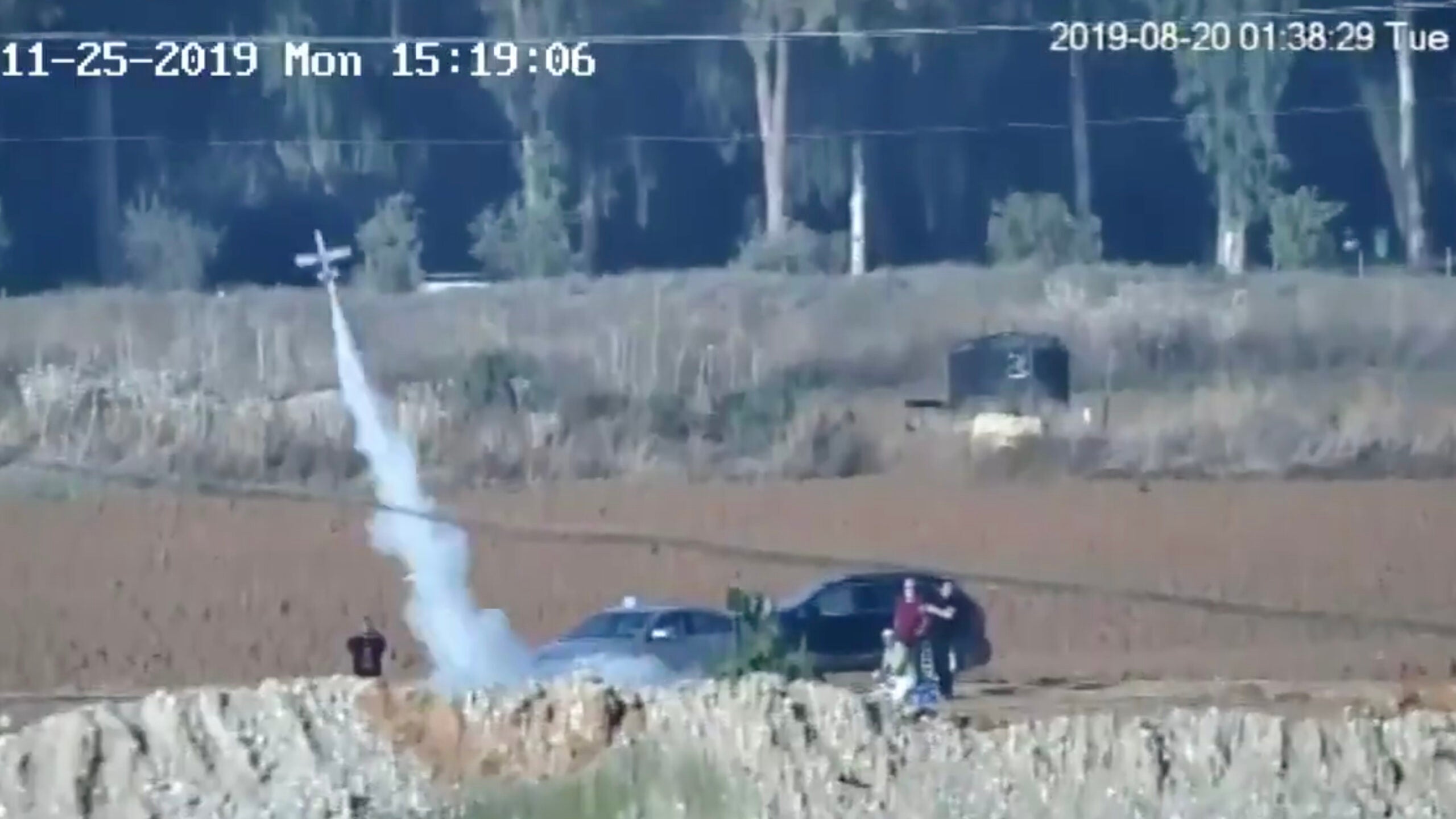A group of more than 20 Israelis, among them former defense officials, are under investigation for allegedly illegally designing, producing, and selling “armed loitering missiles,” also known as “suicide drones,” to an unnamed Asian country. The news comes less than two weeks after the announcement of three legitimate sales of these kinds of weapons by the Israeli arms industry, including to unnamed Asian countries.
The Israeli Police today confirmed the investigation, which has been run “in recent months” in cooperation with the country’s Shin Bet state security service. In a statement posted on Twitter, the Israeli Police explained that the suspects had secretly received instructions “from entities related to the same country,” in exchange for “considerable funds” paid to them, as well as other undisclosed benefits. The investigation was conducted by the Unit for International Crime Investigations, part of the Police’s Lahav 433 division, which is otherwise primarily responsible for investigating national crimes and corruption. As already noted, Shin Bet was also involved, as was Israel’s National Security Council.

“The Israelis are suspected of national security offenses, breaching arms exports laws, money laundering and other financial offenses,” the Israeli newspaper Haaretz
reported. “The investigation continues. The details of the investigation and the identities of the suspects are under a gag order.”
The alleged crimes include offenses against the security of the state, violations of the law on the supervision of security exports, money laundering, and other economic offenses.
“This case illustrates the potential damage to the security of the country due to illegal deals conducted by Israeli citizens with foreign entities,” said a spokesperson for Shin Bet, as reported in the Jerusalem Post. “It also raises fears that technology will get into the hands of enemy countries,” they added.
Israel has sought to increase the regulation around its defense exports in recent years, with the aim of preventing companies from knowingly selling weapons to countries that have committed severe human rights violations.
Under the Law For Oversight of Defense Exports, the Israeli Ministry of Defense must consult with the Foreign Ministry in all weapons sales to foreign countries, weighing up the potential impact on foreign policy and diplomatic relations. Since the law was passed in 2007, the Foreign Ministry has much greater power to veto arms transfers, although they, in turn, can be overruled by the government’s security cabinet. Ironically, in light of the current case, this regulation was introduced, in part, due to the planned sale of intelligence-gathering drones to China, which was eventually canceled due to pressure from the United States.
The Israeli Police have released video and photos of the loitering munitions. A brief video clip, with two timestamps showing August and November 2019, shows one of the weapons being tested, with several individuals gathered beside two cars before it’s launched, almost vertically. The Times of Israel
reports that the Police confirmed this test took place “near a residential area” in the center of the country.
Broadly speaking, suicide drones have the advantages of being small, maneuverable, and hard to detect, as well as being relatively inexpensive. Even a relatively basic loitering munition, offering a man-in-the-loop control system would provide a very useful weapon in many scenarios, especially in asymmetric warfare. Other benefits of these kinds of weapons include the ability for the operator to abort the strike, even at the very last moment, or make manual adjustments to improve accuracy. Generally, suicide drones are very precise while also providing additional means to help avoid collateral damage, capabilities you can read about in more detail in this previous War Zone piece.
While the loitering munition in question appears to have been launched initially using a rocket motor, a photo showing the drones being manufactured in a workshop reveals that it also seems to have a propeller at the rear, for the cruise phase of its flight. The drone itself has a tubular body with large cruciform center-body wings, plus smaller cruciform fins at the tail end. Overall, the drone seems to be broadly reminiscent of an Israeli guided missile, the SPIKE-NLOS, produced by Rafael, although this doesn’t use a propeller engine.

It is not known what guidance system the drone used. Typically, these kinds of weapons can use a man-in-the-loop control system that allows their human operator to see what the drone sees, via a set of electro-optical and/or infrared video cameras, throughout the entire course of its flight.
The more sophisticated models now available offer a degree of autonomy, with the ability to automatically detect, categorize, and track various types of targets. Increasingly common are operating modes in which the drones can proceed to strike the desired targets without any further need for human input.
While it’s unclear whether these more advanced guidance methods were available to the individuals responsible for building these illicit drones, the fact that former defense officials were involved in the plot suggests that they may at least have a significant understanding of these technologies.

Israel is notably already one of the main developers of loitering munitions, or suicide drones, including the Harop that was developed by Israel Aerospace Industries (IAI). Less than two weeks ago, The War Zone reported about how the maritime version of that weapon had recently secured what was apparently its first order, from another unnamed Asian country. The navalized Harop sale was announced alongside a deal with “another customer in Asia” for standard ground-launched versions of that weapon and a sale of IAI’s rotary-winged loitering munition Rotem to a different “foreign country.”
It’s no exaggeration to say that Israel essentially pioneered the concept of loitering munitions, inspired by its early use of drones to help destroy and confuse hostile air defenses during the Yom Kippur War in 1973. In the conflicts that followed, Israel refined its use of drones to help overwhelm air defense batteries, as well as for surveillance. Drones intended for such high-risk missions became increasingly expendable, leading to the Harpy, which was intended to loiter and then home in on threat radar frequencies, destroying the air defense systems itself. As perhaps the first “loitering munition,” the Harpy is the ancestor of today’s Harop, and you can read more about it here.
Of course, it is in the interests of some countries to obscure the details of arms transfers from Israel, in the case of legitimate sales. Political sensitivities are often the reason for Israeli arms deals with international customers being little-publicized by either party, the recent Harop and Rotem sales perhaps being a case in point. Meanwhile, in the case of the illicit loitering munitions, there is a suggestion that the political ramifications could be significant, too. “Sources with knowledge of the investigation said the case was highly sensitive, as it could affect Israel’s foreign relations and lead to a rift between superpowers,” tweeted the editor of the English-language edition of Haaretz, Avi Scharf.

Loitering munitions, in general, have been a topic of major international discussion since Azerbaijan used ground-launched Harops to decisive effect in its conflict with Armenia over the disputed Nagorno-Karabakh region last year. You can read more about this fighting, and the role that drones played in it, in our previous reporting on that conflict.
In this context, it is also worth noting that one Israeli company has previously run into trouble in connection with its involvement in an incident in Nagorno-Karabakh back in 2017. That year, Aeronautics Limited was accused of fraud and violating the country’s export controls for military equipment. This was reportedly the result of an incident in Azerbaijan in which executives from the company “demonstrated” the capabilities of their Orbiter 1K suicide drone by flying a very real strike on Armenian-backed forces in Nagorno-Karabakh. You can read all about that here.
The fact that a fairly small group of individuals can also construct and test, in secret, an apparently functioning loitering munition should also provide pause for thought for the nations around the world that face a potential threat from militia groups or terror organizations. Following their use in the conflict in Yemen, the proliferation of these kinds of weapons in the hands of other non-state actors would seem to be just a matter of time.
Until we know the intended customer of these illegally produced drones, it is difficult to know exactly what kind of scenario they were intended to be used in. However, it seems safe to say that the performance of Israeli-made loitering munitions in last year’s Nagorno-Karabakh conflict has helped make these kinds of weapons something of a “must-have” among armed forces around the world.
Contact the author: thomas@thedrive.com
